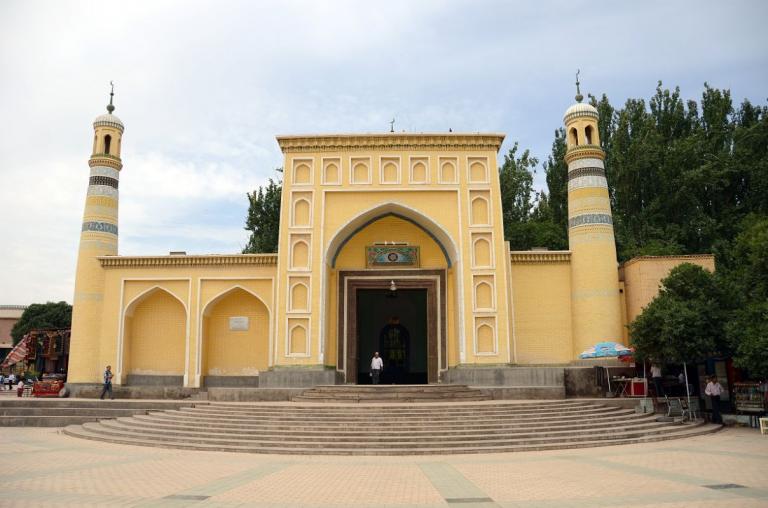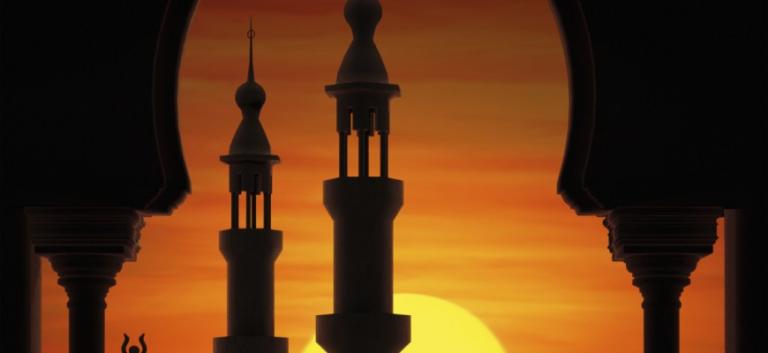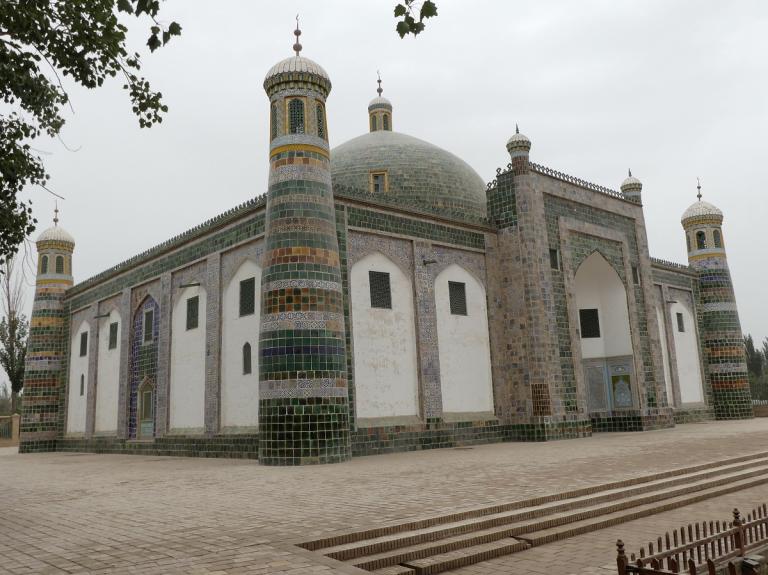Id Kah Mosque
6 min readLocated in the downtown of today’s Kashgar,the ld Kah Mosque is one of the historical treasures created by the Uyghur people.It is famous for its long history,magnificent buildings and bright colors and so on.As famous as mosques in Bokhara and Samarkand in the Middle Asia,the Id Kah Mosque also attracts the attention of vast Muslims.
“d Kah”is a general name of the mosques for the Islamists in Xinjiang to attend religious service.Some people also explain it as a”Festival Place”according to Arabic”Eid”(sounding as”ld”,meaning festival)and Persian”Kah”(Meaning Square),interpretation as”holiday places”,but this interpretation is not quite correct.Although,the mosque is a main activity place for various Islamic festivals,the Muslims also perform daily religious activities here.

The ld Kah Mosque is the key cultural relic protection unit in the Xinjiang Autonomous Region.Over the years,the government of China has allocated special funds for many times to repair the Id Kah Mosque.In 1981,the Id Kah Mosque was comprehensively renovated once more,which made the ld Kah Mosque look completely new and present a new,grand and solemn appearance in front of people.
With an area of 16,800m²,the ld Kah Mosque is the first largest mosque in Xinjiang,comprising a church,scripture teaching halls,an arch and other ancillary buildings.A gate is 4.7m high,and the great arch is 12m high.Two exquisitely decorated columnar towers as high as 18m are respectively standing on both sides of the arch.The top of each tower is provided with a summoning building,and a crescent stands on the roof of the building.
A large Gongbeizi is behind the arch,whose top also supports a small steeple,and a crescent made of brass stands at the top of the steeple.The arch,the gate,the steeple and the Gongbeizi form a venerable and magnificent typical building with the Islamic style.
Entering the gate of the temple, one can see that there is an octagonal hallway. The passageways on both sides are accessible to the courtyard of the mosque. The area of the courtyard is larger than 1 hectare. There are two large pools in parallel in the north half zone. Both the south side and the north side are equipped with a row of scripture-teaching halls which are 36 in total for imams to sermon. In the courtyard, the water in the pools is green and clear, white poplars nearly reach the sky, and mulberries and elms are lush, so the courtyard looks quiet. The church is 1.5m above the ground, built on a platform with an area of 2,660m². The plane of the church is of a rectangular shape.140 green carved wooden pillars as high as 7m support a white ribbed ceiling which is a wooden caisson painted with various colorful patterns. The church can be divided into a main hall and a side hall. The main hall is a closed rectangular building provided with a shrine called “Mehera Bo”on the back wall. And the shrine is the official “Orientation”of Muslims when they are performing the religious service. There is a carved wooden preach platform beside the shrine, and a truncheon is placed beside the preach platform.A great mullah preaches The Koran on the platform at festivals or on Sundays.

The ground inside and outside the hall is paved with carpets, flannelette blankets, cloth sheets or reed mats specialized for believers to kneel on and pray. The number of believers in the mosque on usual Sundays can be 2,000-3,000. On”Jumah”days, the number can be 6,000-7,000. There are more than 30 thousand people at important festivals, and the scene is very great. On this day, people kneeling for doing the religious service are here and there in the mosque. Sometimes, Muslims kneel on the square outside the mosque.
The ld Kah Mosque has stood on in the downtown of Kashgar for over 500 years. According to historical records, the ld Kah Mosque in the early period was not large, which was just one unimpressive small mosque at that time, built by the descendant of Kashgar Khan Shakeshaizi-Mizar in 1442. Originally, this place was used for burying famous figures in Kashgar, such as Kashgar Khan Shakeshaizi-Mizar and his relatives, and Mirza Aziziweli Sultan who wasa little brother of Shache Khan Saiyide who was the descendant of Chagatai.
In 1537, Ublihadr-Mirzaalburke enlarged the original small mosque to become a large mosque capable of performing Sunnah Jumah prayer (Sunnah Jumah prayer every week) in order to commemorate his uncle Mirza Aziziweli buried here.
In the late 18th century,a rich woman called Gulizela died of an illness in Kashgar on the way to Pakistan. Before her death, she once left a will of using her heritage to built one mosque. And the mosque is the predecessor of the ld Kah Mosque. At that time, the mosque was not large, and what around the mosque was still a graveyard. Since then, the ld Kah Mosque has been expanded for many times.
In 1872, the ld Kah Mosque was overhauled once more to become today’s scale. This construction divided the mosque into 2 parts: the mosque in the east and the scripture-teaching hall in the west. There were 96 rooms for 400 students to live and study in the teaching hall. Besides,a steam bathroom capable of holding 100 people to take a shower and a warming room for 400people to warm themselves were built, and 4 artificial ponds were built in addition.
Through many times of construction and expansion, not only the rooms, but also trees, flowers and grasses have been widely increased to make the mosque more quiet and fresh, becoming not only the place for Muslims to hold the religious activities, but also a scenic tourist attraction in Kashgar.
On both sides of the ld Kah Mosque, streets and thoroughfares are crisscross, and shops are standing in great numbers. The shops such as “Metal Cabinet”and”Wooden Cabinet”owned by the Uyghur people are arrayed along the streets. Streams of people busily coming and going, and widely distributed stalls embody vigorous business opportunities. Both the outside and inside world of the mosque is picturesque. Despite the passage of time, the Id Kah Mosque and the Bell Tower on the Id Kah Square enhance each other’s beauty, and the uniform and harmonious pattern still amazes people.
When the festival comes, thousands of people with a hubbub of voices arein front of the ld Kah Mosque. On the platform at the top of the mosque, suona horns blow clangorously, and the voices of drums are resounded through the sky and can be heard for miles around. Especially the Corban(“Edi al-Adjha”) is the most grand and hilarious one of all in Uyghur. Before dawn on this day, Muslims dressed in festival clothes are sitting calmly at home to wait for the call. They crowd towards the ld Kah Square as soon as they hear the distant voice from the imam, and at this moment, the ld Kah Square is crowded fully like tidal surges. Muslims kneel at each corner of the square, but they are in good order and modest to each other. When the religious service is started, only the imam’s praying of precenting scriptures can be heard indistinctly. It is silent on the square, and Muslims are piously praying. After the religious service, people regardless of the age perform exciting and enthusiastic Sama dance in front of the mosque. The dancers are in thousands of postures. The dance has been continued for 3 days, and it is full of happy and warm festival atmosphere from beginning to end.









